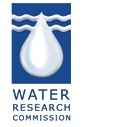Workshop 5 (October 29-30, 2012):
Participating Organizations:
Hydrogeodesy Tutorial (4 hours, day and time to be determined):
|
|

|
IGCP 565 Workshop 5: Water Security for Africa: Bringing Together Research, Monitoring, and ManagingOctober 29-30, 2012 |

 |  |
GNSS Methodology for Groundwater Resource Assessment, Gateway Wellfield, Hermanus
Andiswa Mlisa, Chris Hartnady, and Sheila Imrie
Umvoto Africa (Pty) Ltd, Muizenberg, South Africa
The Overstrand Municipality of the Greater Hermanus Area has embarked on groundwater development to augment the water supply. A detailed monitoring programme was developed for a better understanding of the hydraulic system, interconnections between surface water, the shallow primary aquifer and the deep, fractured-rock (FR) aquifer of the Table Mountain Group (TMG). The FR aquifer system like the ~1 km thick Peninsula Aquifer in the TMG provides an opportunity for fundamental advances in understanding interactions between fluid flow and mechanical deformation, through analysis of the "hydro-mechanical" coupling in FR permeability, fluid transport and deep storage in FR porosity. Present knowledge of skeletal-framework compressibility, the main factor in specific storage, is based on published data from similar rocks elsewhere. Up-scaling from drysample laboratory measurements of elastic properties of borehole-core samples at ~10-cm scale to saturated rock volumes on 100- to 1000-m scale, is methodologically problematic. Historically, such aquifer-deformation measurements have used costly devices (borehole extensometers), but recent advances in GNSS technology (e.g., GPS), now provide noninvasive methods of geospatial data collection, which can be used in conjunction with borehole hydrograph information to estimate the specific storage and hydraulic conductivity of the aquifers. Using a Trignet station, HERM situated in the grounds of SANSA Space Science, in close proximity to the wellfield in Hermanus and established a local network of three new cGPS stations on the borehole infrastructure of the Gateway Wellfield at Hermanus, for the purpose of quantifying the vertical and horizontal surface deformations related to groundwater abstraction. The hydro-geodetic analysis in the case study area showed that, 1) the horizontal displacements at the Hermanus GPS stations are closely aligned with the calculated horizontal velocity components of the Nubia plate relative to the ITRF reference frame; 2) the vertical displacements showed varying long-term trends (upwards at HGW1, downwards at HGW2 and flat at HGW3) with a high frequency of peaks and troughs that correlate between stations but do not have a clear link to pumping or atmospheric phenomenon at a daily (one session per day) time-scale; 3) at a shorter time-scale (eight sessions a day) the vertical movement at HGW3 (relative to HNUS) shows a clear downward movement followed by an upward movement in response to a pump switch off at GWE06.
In case of problems, mail to info@igcp565.org.